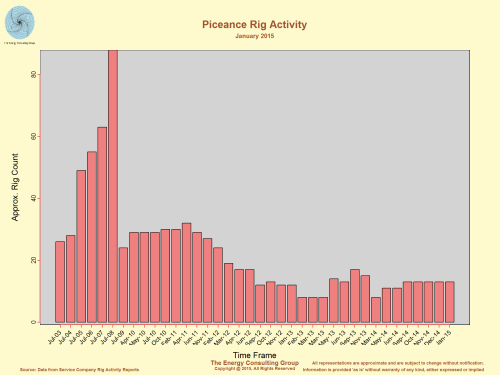Like in any other industry, technology does not stand still in the
exploration & production sector, and what works in one setting at one
time, may be superseded by technological evolutions and breakthroughs.
A perfect example is what happened with the large, tight gas fields
referenced previously. Given large resource loading (bcf per
square mile), these fields became increasingly tempting targets as gas
prices increased towards the end of 2001. However, the key
technology of large hydraulic fracking, still required a gestation
period to be improved before economic development could occur.
Between the mid-1990's and early noughts, most of this evolution
occurred, and required experimentation with fluid designs, sand loading,
treatment rates and volumes, fluid/sand density injection profiles, etc.
Multi-zone Stimulation Technology (MZST) and Annular Coiled Tubing Fracing
(Neither of these was a particularly new idea, but they were refined to work better
in the drilling/completion contect of the Piceance Basin, Williams Fork Field)

High natural gas prices between 2001 and 2008 were also an
important factor. However, from a longer term persepctive, it is
now obvious that fracking in general was evolving rapidly, with
the industry increasingly considering its use in formation types
with even more resource loading: the shales. The key
breakthrough was fracking in horizontal laterals at a reasonable
cost, and as the marriage between horizontal drilling and large,
scale multi-stage fracking deepened and matured, the large,
newly developed tight gas sands were increasingly marginalized.
This is illustrated by the following graph, which charts the
evolution of rig count in the Piceance Basin.
